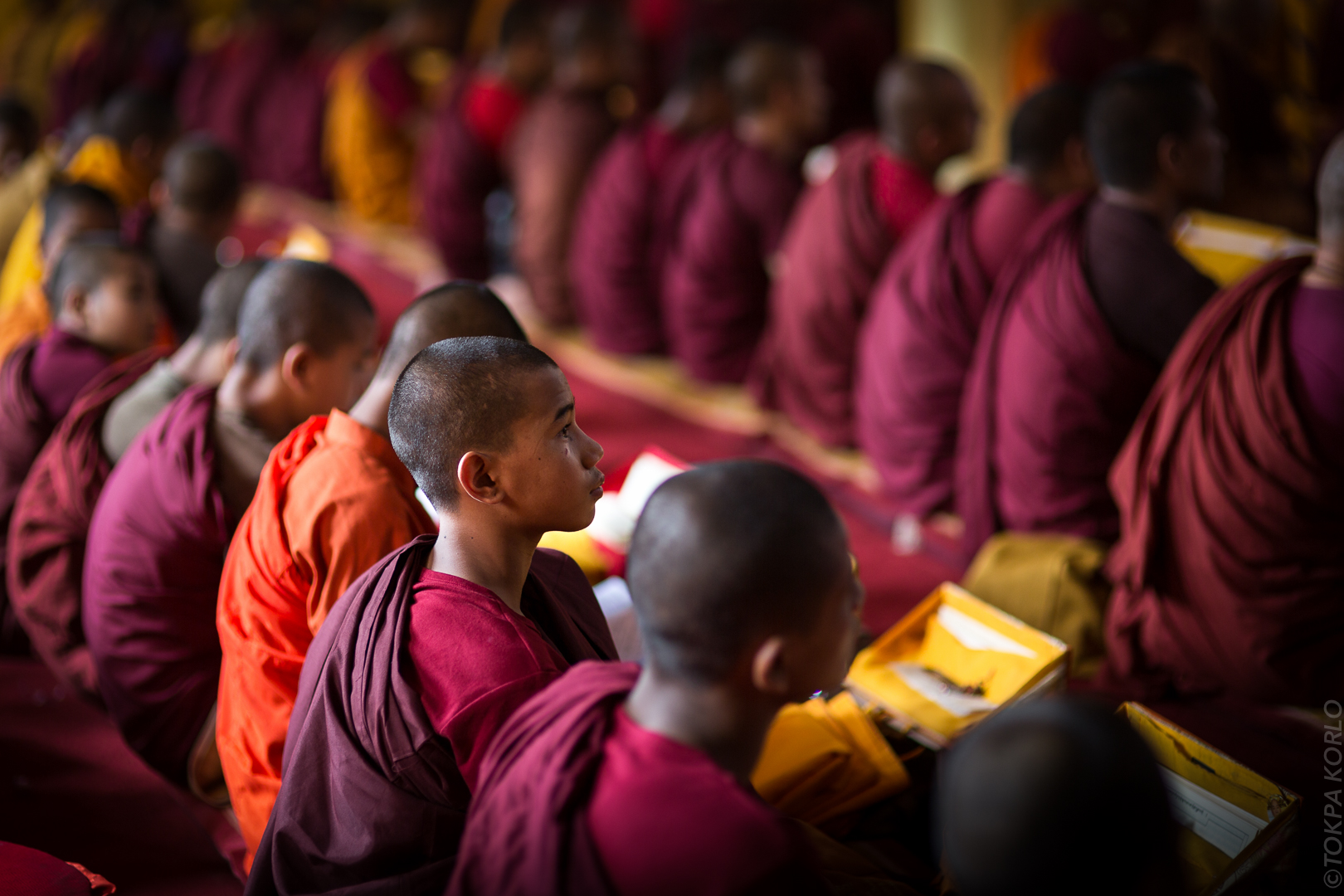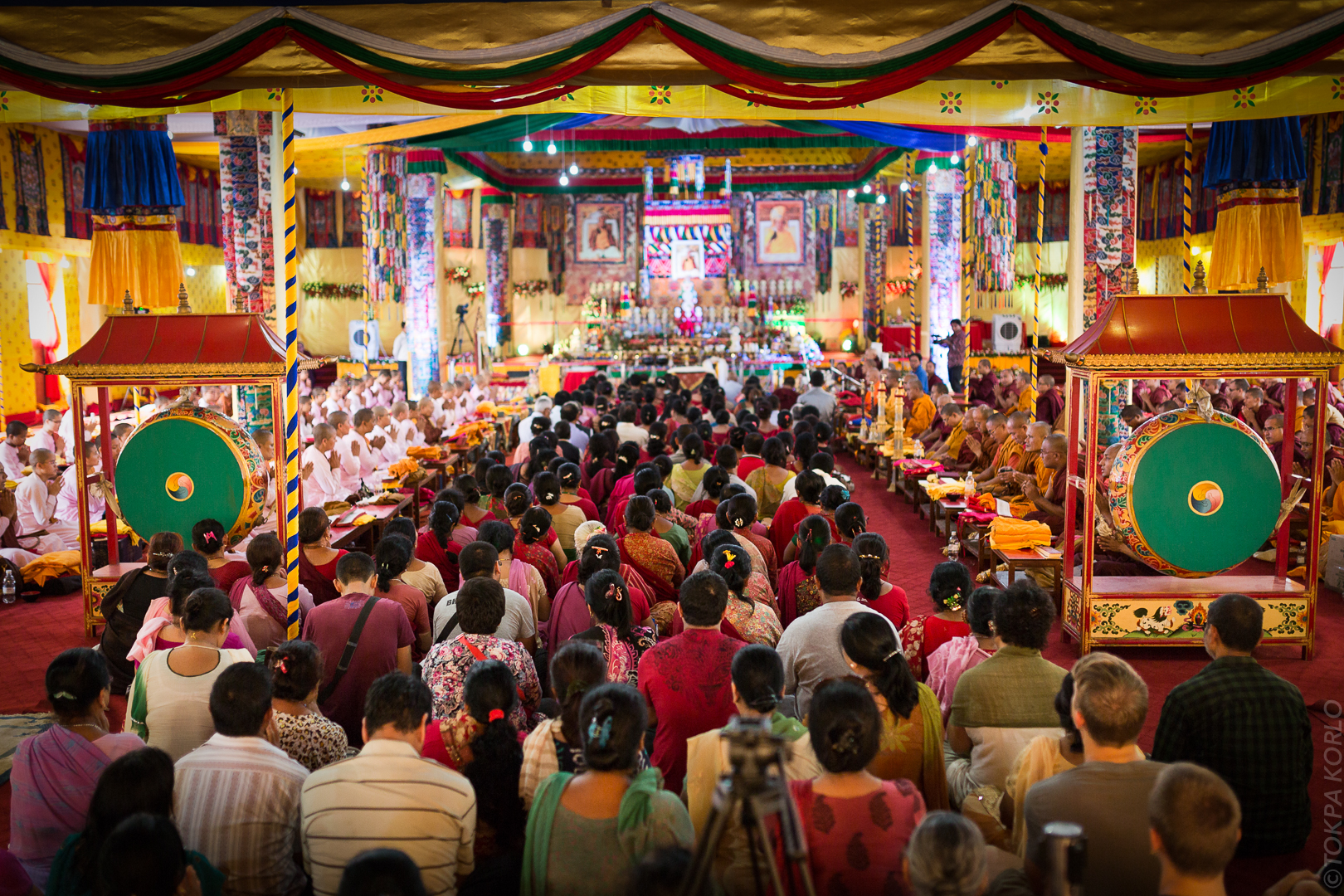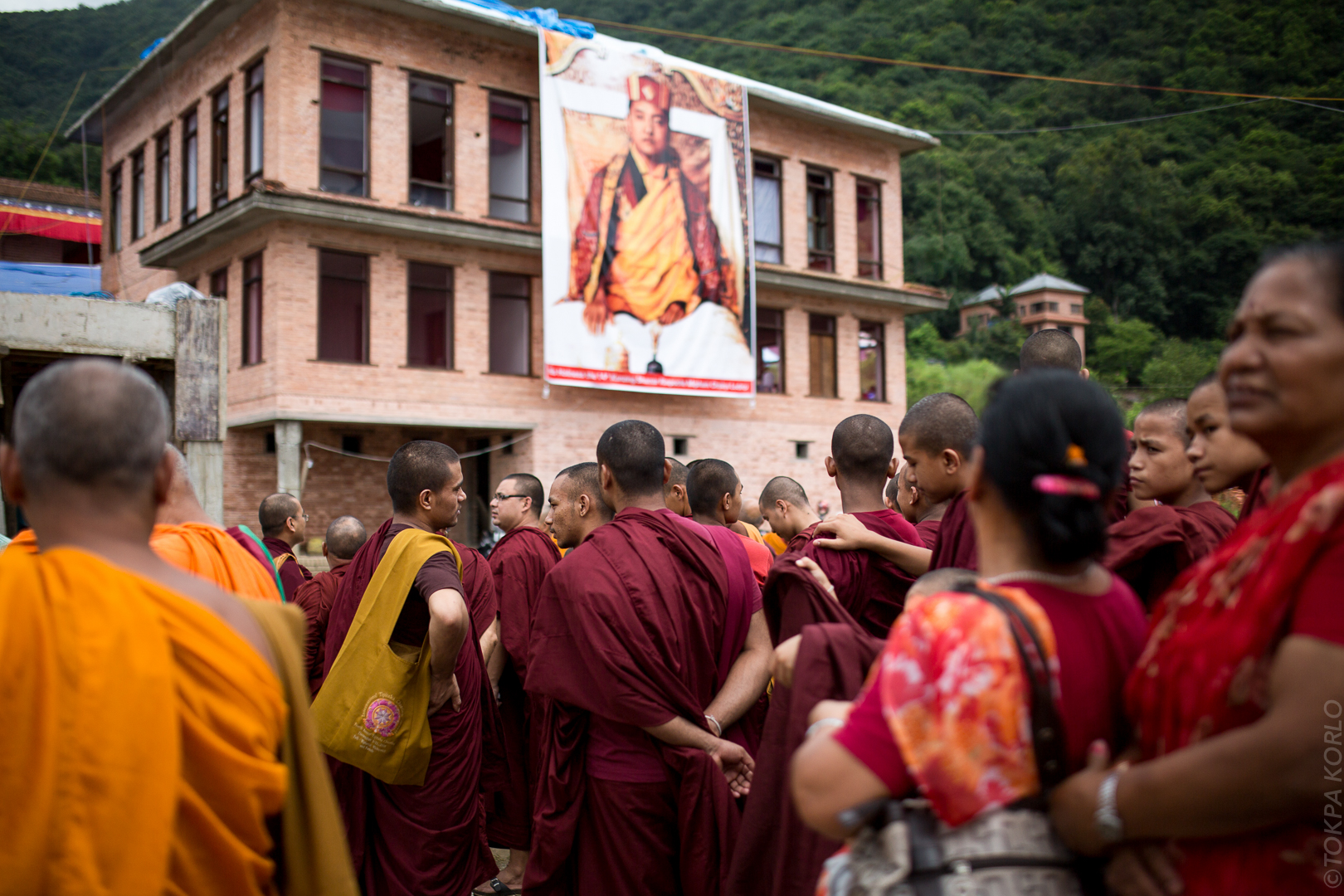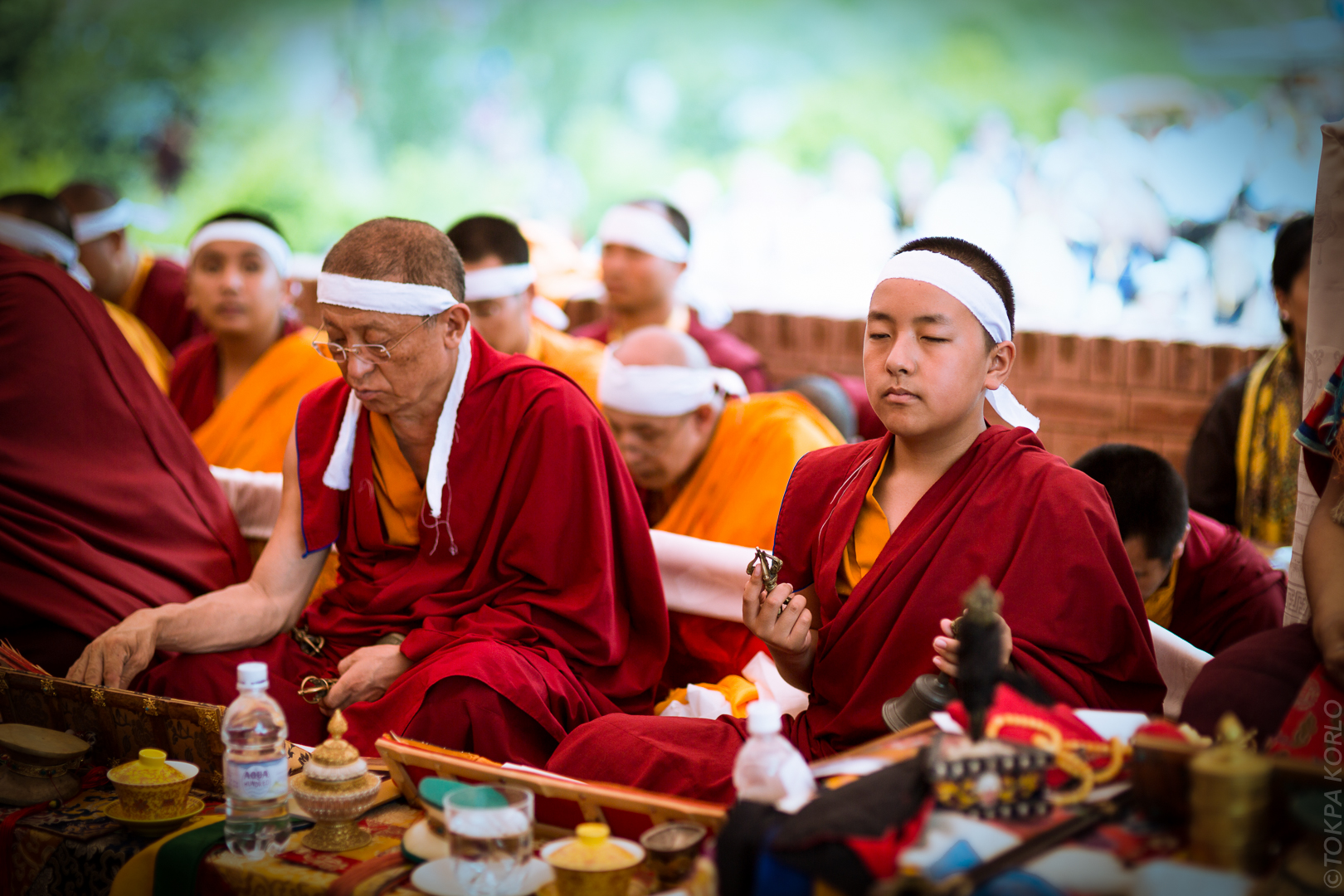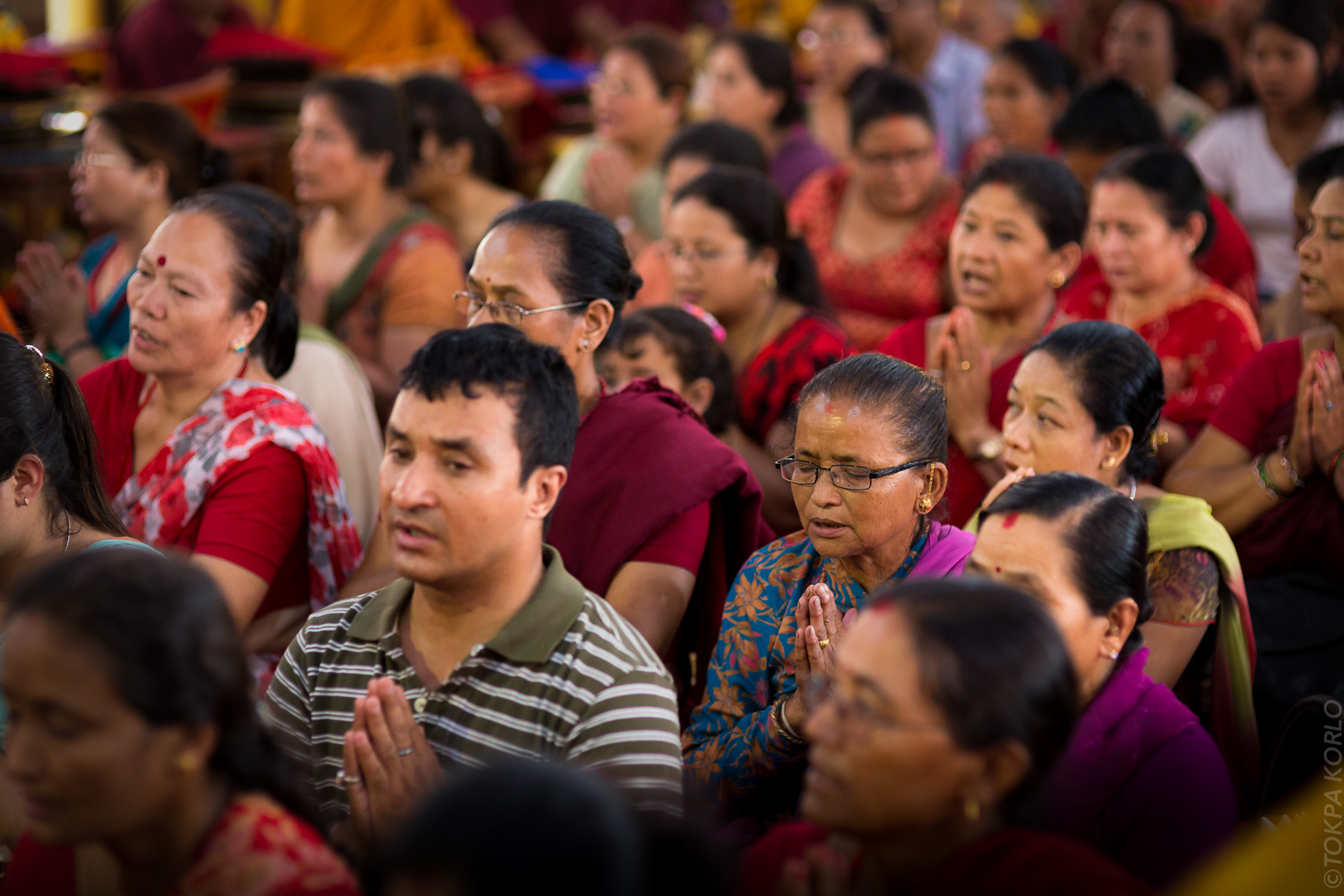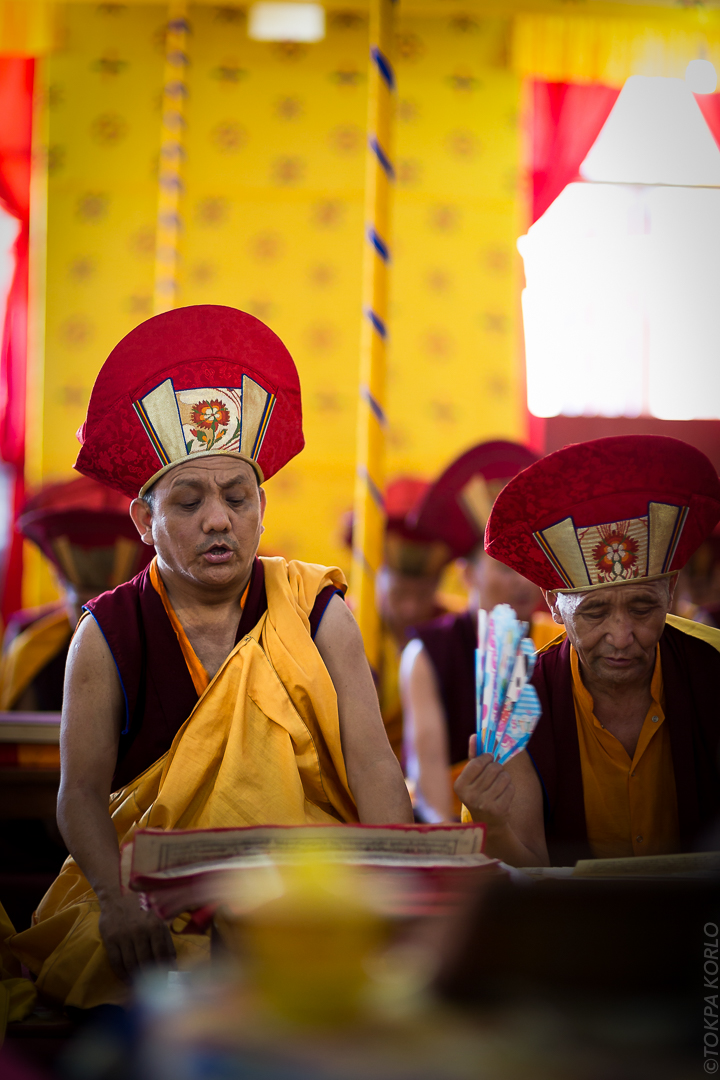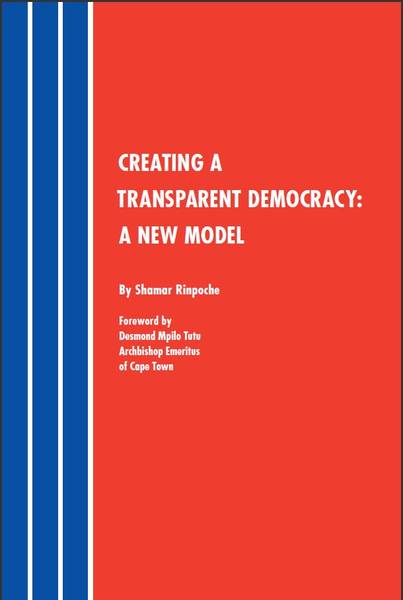In general, there are two aspects to the Bodhisattva Vow. The first aspect is the wish, the intention, or aspiration of a bodhisattva. The second is the application of that intention or wish. The Application of the wish means to actualize, or to put the wish into action. The Bodhisattva Vow should be taken after the Refuge Vow.
The Aspiration of the Bodhisattva Vow
First comes the aspect of the wish or aspiration. This means that we set our minds upon a goal, towards a target. What is this? It is all the beings that occupy space in a whole variety of forms of existences in all the worlds and planets. What characterizes a living being? It is that the living being has a mind. Its mode of existence is characterized by suffering due to the fact that the mind is deeply rooted in fundamental ignorance. A mind marked by fundamental ignorance produces nothing but disturbing emotions. Under such influences, inevitably we will act and accumulate karma. The karmic seeds when ripened produce suffering. It is this suffering that underlies and produces the various types of existences. The process generates itself life after life and forms a cycle of existences. By being concerned with all beings, their conditions of existence and their suffering, we will develop an authentic compassion.
Developing the Wish to Liberate All Beings
Keeping in mind the suffering that all beings experience, we need to develop an attitude. This mental attitude is a profound wish that we must develop in an honest way. The wish is for all beings to be completely and permanently liberated from suffering. Faced with this suffering of beings, one encourages oneself to develop the state of mind known as bodhicitta. In order to realize this wish, i.e. to relieve beings of suffering in a definite way, one has to work on oneself and be liberated from one’s own suffering and confusion. Then afterwards, one can acquire the true capacity to help others and to liberate them. This capacity is a complete and perfect awakening; it is the state of Buddhahood. It is a real capacity to benefit others in a spontaneous way. In order to achieve this awakened mind, one needs to have firmly created the cause for it.
The Awakened Mind
The development of bodhicitta, or the enlightened aspiration, is the cause of awakening. The development of this aspiration forms a seed in the mind that will ripen as enlightenment. To formalize our commitment, we take the Bodhisattva Vow. Having taking the Vow, we carry on by actualizing this attitude of mind, and we develop spiritually. From life to life, we become increasingly capable of achieving the benefit of others. Eventually, we will realize the ultimate fruit that is the complete and perfect awakening, the state of Buddhahood. We will then benefit beings spontaneously, no longer in a conceptual manner, but in a completely spontaneous way without any obstacles. Just as the sun shines in the sky and illuminates everything, the activity of the Buddha will naturally benefit others. It is what is called the fruit of awakening, a complete and perfect awakening acquired by developing bodhicitta.
These are therefore the two points of view, the two reference points on the path to enlightenment: the fruit itself, and the seed or cause that produces the fruit. The fruit is the genuine capacity to benefit others. Its cause is the development of bodhicitta, the development of the enlightened attitude, formalized by the Bodhisattva Vow.
Four Types of Beings
We have talked about the fruit of awakening. It is important to really understand what this fruit is and what it means to be awakened. A Buddha has the capacity to accomplish the benefit of others in a spontaneous and limitless way. We need to understand what that means.
A Buddha benefits others spontaneously through four levels of activity that correspond to four types of beings. Spontaneously, a Buddha’s activity enables beings that are completely imprisoned in samsara and its suffering, to have the opportunity to liberate themselves. This is especially the case for beings trapped in the suffering of the lower realms. A Buddha has the capacity to bring them to a rebirth in which they can experience relative happiness.
The second and third levels of activity concerns the beings that are already on the Path of spiritual practice. These beings are the arhats, and the Pratyekabuddhas. (They are on the Path but their levels of realization are still not the real enlightenment.) In this case a Buddha’s activity takes the form of encouragement and support so that they can completely free themselves from samsara.
Take for example the arhats. Their practice will yield them the realization of the Smaller Vehicle (Hinayana); the Buddhas can help them equally to attain full enlightenment. The arhats are those who are already established in an inner peace of mind. They reside completely in this peaceful state. This achievement of inner peace is the fruit of the path of individual liberation, the awakened state of an arhat. The Buddha’s activity can influence an arhat to advance towards full awakening rather than to remain in this peace. The activity of a Buddha can effectively shake an arhat out of the state of serenity and peace of his samadhi or meditative absorption. The Buddhas exhort the arhats to continue along their paths towards full awakening. The same applies to the Pratyekabuddhas.
A Buddha’s activity also benefits a fourth type of beings. They are practitioners who are on the higher levels of the Bodhisattva Path, that is, the eighth or the ninth level. These Bodhisattvas are encouraged and helped by the activity of a Buddha to continue their efforts, to persevere, until they realize by themselves the full awakening.
Thus, we can see how vast this awakened activity of a Buddha is. Its sphere encompasses at the same time, beings who are completely caught in samsara, beings who are already on the Path of practice as well as beings who have already attained various levels of the Path. In short, this activity benefits all types of beings, on all levels of the Path. So it is important that we understand the initial cause that precipitates this spontaneous and boundless activity. It is this promise, this commitment, and this oath to practice in order to help and to benefit others. The Bodhisattva Vow enables us to have this spontaneous and limitless result.
Putting the Enlightened Aspiration into action
To actualize this enlightened aspiration and wish, we have to engage ourselves in the practice of the six paramitas, the six enlightened qualities. They are : generosity, ethics, patience, enthusiastic effort, meditation, and non-discriminating wisdom. A Buddha is someone who has brought these six qualities to full perfection and maturity. By practicing these qualities, complete awakening can be realized. The Buddhas have practiced and actualized these qualities, they perfected them and thus achieved enlightenment. They have gone through numerous existences rooted in their wish to truly help others. As a result, their enlightened qualities blossomed. We should follow their example and as we take the Bodhisattva Vow, we should think: “Just as the Buddhas of the past, the present and the future, adopt the Path of practicing the six enlightened qualities, the six paramitas, I too will follow this Path.”
The Discipline of the Bodhisattva Vow
We can activate and carry out the Bodhisattva Vow in the context of three types of discipline. Firstly, we reduce our negative actions that cause suffering. Secondly, we accumulate positive actions that generate positive results for ourselves and for others. And thirdly, we behave and act to benefit others.
In order to maintain and to carry out the Bodhisattva Vow, we have to train ourselves. The methods are clearly explained in Gampopa’s ‘Jewel Ornament of Liberation.’ If we fully train in these methods, we will build a powerful base for the development of virtues and everything that is positive. The development itself is automatic when the Vow is not broken. Even when we sleep and even when the mind is not attentive, these positive benefits continue to develop. This is why it is said that the Bodhisattva Vow is like a fertile ground for the development of virtue.
